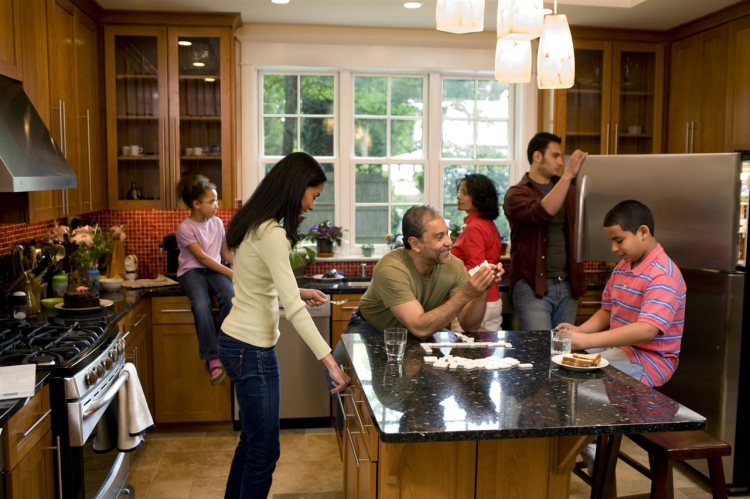While each household has its personal reasons for opting for a multigenerational structure, it’s a trend growing across cultures. One in five Americans live in a multigenerational household, according to the Pew Research Center, which defines multigenerational living as a home that includes two or more adult generations, or including grandparents and grandchildren younger than 25. As quarantine and social-distancing impacts continue, the number of families choosing multigenerational living is poised to grow.
If this arrangement is your present or possible future, and you have the time for a home improvement project, consider these three steps to help improve multigenerational living and update your home so that it is comfortable for many people for many years to come.
Step 1: Expand living space. How can you add common spaces or transform the space you do have to accommodate more people? Finishing a basement is a smart option if you have financial means. You might also finish attic spaces or add a shed with seating and electricity. Stylish room partitions or curtains can provide privacy and the feeling of a room if you don’t have money to invest in a larger project. Finally, consider refreshing outdoor spaces with seating spots grouped throughout the yard to expand the property’s livable space.

Macerating toilets, or “upflush toilets,” send waste to a macerating unit behind the toilet or in the wall. The waste is liquified then pumped out through a pipe that’s been tied into the main drain line.
Step 2: Add a bathroom without costly demo. Whether it’s to put a bathroom closer to an aging parent’s bedroom or simply add a powder room in a nontraditional location to expand resources, consider affordable options such as macerating toilets and drain pumps from Saniflo. These above-floor plumbing options allow you to add a bathroom where no conventional, below-floor plumbing exists, so there’s no need to bust through concrete floors and compromise a home’s integrity. You may be able to find a solution that fits your needs at saniflo.com.
Step 3: Add and enhance entryways With more people coming and going, entryways can become chaotic places. If possible, consider refining the entry points to accommodate increased traffic and contain clutter. You may want to add benches and cubbies for each person’s personal items to help contain messes and prevent tripping hazards. Proper lighting, stable hooks and grab bars are also useful additions to accommodate multigenerational living.
Although you have a main entryway, look for other points of entry such as from the garage, the side or back of the home. Consider refreshing different entryways for different residents. For example, working household members may be coming and going, so the door from the garage should be their main point of entrance. For aging family members with stability issues, the front entryway might be a good option, because it has railings and bright lighting. You can even change stairways into ramps if necessary.
Comments are not available on this story.
Send questions/comments to the editors.


